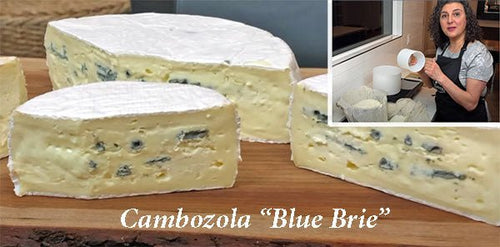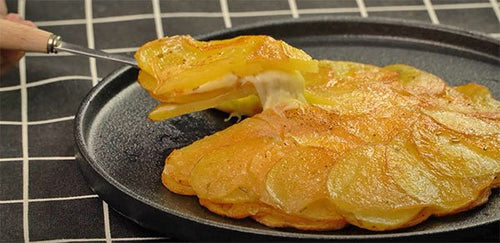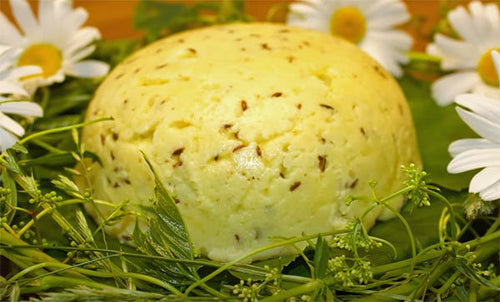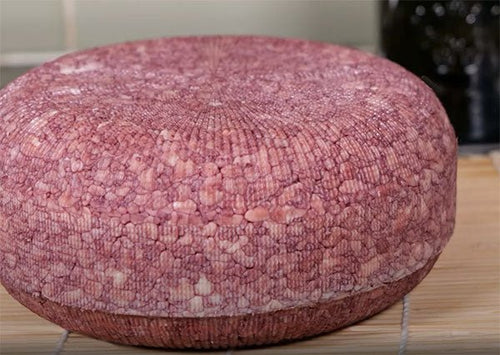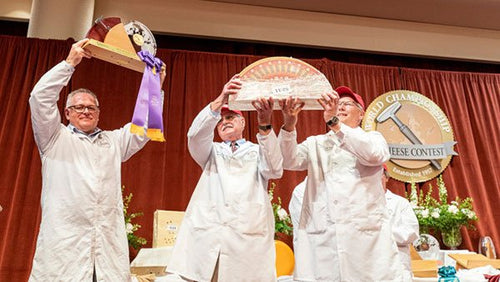NEW AT CHEESEMAKING.COM
Bible of Cheesemaking
We have just republished the Frank Kosikowski bible of cheesemaking and is now offering it at 1/2 the original price. If you do not have this one in your library yet now is the time to order it. You will have a lot more than you will ever use and all the info you will ever want!
"Cheese and Fermented Milk Foods", by Frank V. Kosikowski and Vikram V. Mistry
This 3rd edition, 2 volume set was previously $130.00 and, at that price, unavailable to many. We have found a great printer for this fabulous book and can now make it available to all for just $75.00. As a tribute to the late Frank Kosikowski, we have re-printed his book, with no changes made and at a price you can afford. You will just love this one!
CHEESE TIPS FOR EWE
Pressing and Aging Questions
Q. Last night I stayed up until 1:30 a.m. making the Monterey Jack only to find today that the curds never knit. I dipped them in 100 degree water and re-pressed but they are still loose. Can I still age it? Or will bacteria move into the holes? I made it with raw milk so not sure what that means for anything.
A. This is a problem due to the curds losing too much moisture before being molded.
The dry cheese could be due to several factors:
- too much culture or ripening time
- cutting curds too small
- not controlling the temp well during the process
- stirring too long or vigorously
Please review your process and make changes for future cheese sessions.
These dry curds could be formed into a good consolidated cheese but it would take much 3-5 times as much pressure. The cheese would need to be aged longer and could become a more complex cheese. This cheese will have problems in aging due to its dryness. Mold will also get into all of those cracks and be difficult to remove.
Q. I'm making cheddar in a press but the cheese cloth is bunching (sides as well as top and bottom) which makes for an ugly cheese. Is there any way to prevent this?
I'm not sure how to get around the problem with the sides (as its a cyclinder). But for the top is it possible to cut a piece of cheese cloth the size of the follower?
A. This is a classic example of trying to fit a square peg in a round hole. I usually try my best to even out the cloth by pulling up and out on it as I rotate the mold. For the top I cut a piece of our disposable plastic cloth, place it one on the top surface and smooth it out before placing on the follower.
Q. I put the cheese I made in FoodSaver Vacuum Seal bags and I have noticed that most of the cheeses looked nice, but instead of being creamy inside they are quite brittle and crumbly. I wonder if next time I should leave some air in the bags or just disgard the whole idea with the foodsaver (they are convenient) and mess again with waxing and cracked cheeses. Maybe sombody has better experience with this and has some pointers.
A. I would expect the cheese in the FoodSaver bags to not have aged very well.
What you have done is trapped them in time with no oxygen in the bag and no exchange of gases. This would have soon stalled the ripening process. I have used used thse bags but only for short term storage when I cut into a larger cheese and only with fully aged cheese that I want to put into a time stall. I leave them out for a day or 2 when I open the bags to let the cheese dry out and breathe a bit before using.
Have a cheese making question, we're here for you: info@cheesemaking.com
Meet a Fellow Cheese Maker
Cheese Making in Greece
With their small herd of cows, the sisters of this monastery have been making their own cheese for several years now. Using 8 gallons of milk at a time, they make several types of cheese including, Parmesan and a Greek hard cheese called Graviera (much like a gruyere). They also make yogurt, fromage blanc, and Gouda.
Sister Joanna has come to us with questions over the years and through practice has become a very accomplished cheese maker. She has been kind enough to send us photos and a description of making cheese for the monastery.
"The cheese we made in the photos is a Greek cheese called Graviera. This cheese is usually made from sheep's milk but we decided to try it with cow's milk and it's just as tasty. It's a cheese with a piquant flavour, similiar to Romano cheese and it melts really well.The longer it's cured the tastier it gets. We usually wait 5-6 months before it's eaten. It's a fabulous cheese especially for melting. We really like it here in our monastery"
Sister Joanna
News From Fellow Cheese Makers
Would you like to build a cheese cave? Here's someone to help.
My fiance and I recently ordered your book the mozzarella starter kit and some extras. We have made our first 2 batches and love it. I have always loved cheese but in the past year have gotten almost obsessed. I have been tasting new cheeses weekly and can't wait to eventually try to make some more difficult cheeses myself.
My favorite cheeses are aged cheeses which then led me to read more about what goes into aging cheeses properly. During this I learned that cheese rooms or "caves" are quite elaborate rooms, much like wine coolers.
I actually have spent the last 3 years working at an engineering firm where I am project engineer/project manager designing high end residential homes in CT, Long Island, Nantucket, and etc. Part of my job is designing custom wine and fir closets that range from 25 square feet up to 200 square feet. If you know of anyone who is looking to have a cheese cave made I would be very interested in helping then with designing, overseeing construction and ensuring that they get a great product in the end. Hopefully some day I will be able to make my own cheese cave and age cheeses. When I do I will send one of my first batches to you to try.
Thank you for your website and offerings.
-Nick Fair nicholashfair@yahoo.com
Milk Resources
We are continuing to compile a list of Local Milks for cheese making and where you will be able to find them in your area. Please feel free to let us know of your favorite 'good milks' and the cheeses you have made from them. Click here to view our listing. Thank you and Enjoy.
Farm Loaf Bread Recipe from a customer
Ricki, this recipe is very flexible and forgiving - the more you knead it the better it is. The bakers who know the "feel" of a well kneaded bread will know exactly what I mean.
Dairy Farm Loaf Bread Recipe
- 1/4 cup of sugar
- 2 Tablespoons of shortening
- 4 teaspoons salt
- 4 cups liquid scalded (whey is best, however you can use whole or raw milk, diluted buttermilk, etc.)
- 1 cake or package yeast
- 1/4 cup lukewarm water
- 12 to 14 cups of flour
Combine sugar, shortening, salt and liquid in a large mixing bowl.
Cool to lukewarm and add yeast softened in lukewarm water.
Add 4 cups of flour and beat thoroughly, add remaining flour gradually and mix to a dough that won't stick to your hands or bowl. Knead lightly on floured surface 8 to 10 minutes.
Place in a greased bowl for 2 to 2 and one half hours
Knead about 2 minutes, let it rise again to double size.
Knead down, divide in 4 portions for loaves, cover 10 to 15 minutes.
Mold into loaves, place into greased pans, cover loosely, set in place at least 82 degrees until double.
Bake at 400-425 degrees for 40 to 45 minutes.
Makes four loaves and freezes very well.
This bread made and used by a dairy farm for all the family and workers as sandwich bread in the 30's, 40's and 50's before the grocery store loaf bread was so prevalent, it makes a beautiful loaf and slices like a dream.
If you are sharing this with your readers please include our website, we have a lot of good stuff there.
Connie Stone
Stonehaus Farms
www.stonehausfarms.org
Please send your cheese making news & photos to: moosletter@cheesemaking.com
























































































